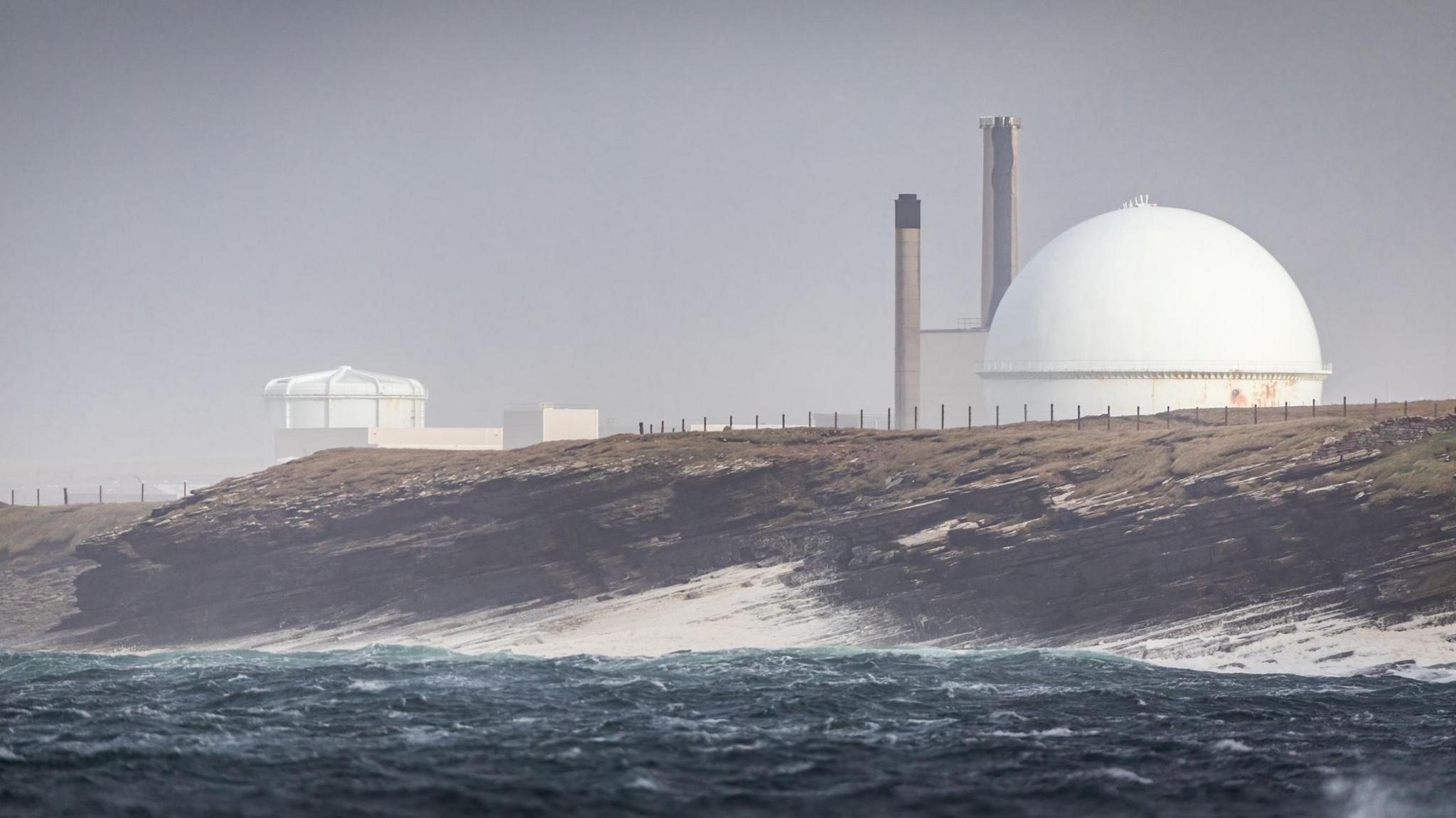Dounreay waste particle 'most radioactive' find for three years
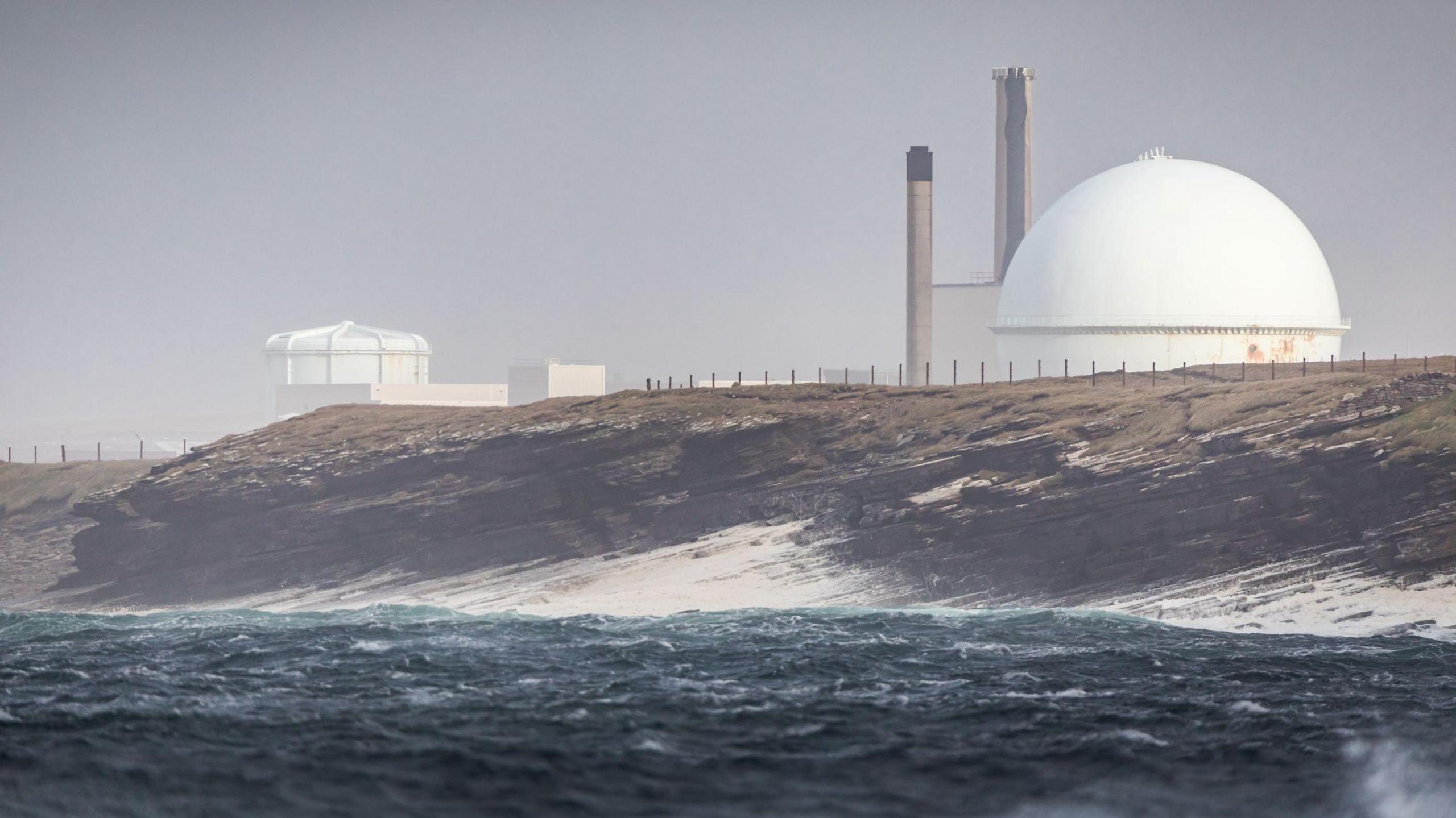
The particle was discovered near Dounreay in April
- Published
A fragment of waste found near the decommissioned experimental nuclear power facility in Dounreay in April was the most radioactive to be detected in the past three years, the Highland site's operator has said.
The fragment, categorised as "significant", was discovered during monitoring work around the nuclear power plant near Thurso. It is the latest in a long line of particle discoveries in the area.
Dounreay was built in the 1950s as the UK's centre of fast reactor research, but during the 1960s and 1970s sand-sized particles of irradiated nuclear fuel got into the drainage system.
Work to clear the pollution began in the 1980s, after particles were found washed up on the nearby foreshore.
Nuclear site told to improve safety after worker hurt
- Published8 May
New study of radioactive particles flushed into sea
- Published27 October 2021
Robot dog flips crane switch at nuclear site
- Published9 April
The facility closed in 1994. The multi-billion pound decommissioning process involves hundreds of workers and is expected to last into the 2070s.
The full decontamination of the site is expected to take more than 300 years.
A Dounreay spokesperson said: "Particles are a legacy of industrial practices dating back to the early 1960s and our commitment today to environmental protection includes their monitoring and removal from the marine environment and transparent reporting of our activities."
A group of independent experts, who advise the Scottish Environment Protection Agency (Sepa) and Dounreay, classify particles by the radioactivity of their caesium-137 content.
The categories are minor, relevant and significant.
Significant means a reading greater than one million becquerels of CS-137.
A becquerel is the standard unit of radioactivity.
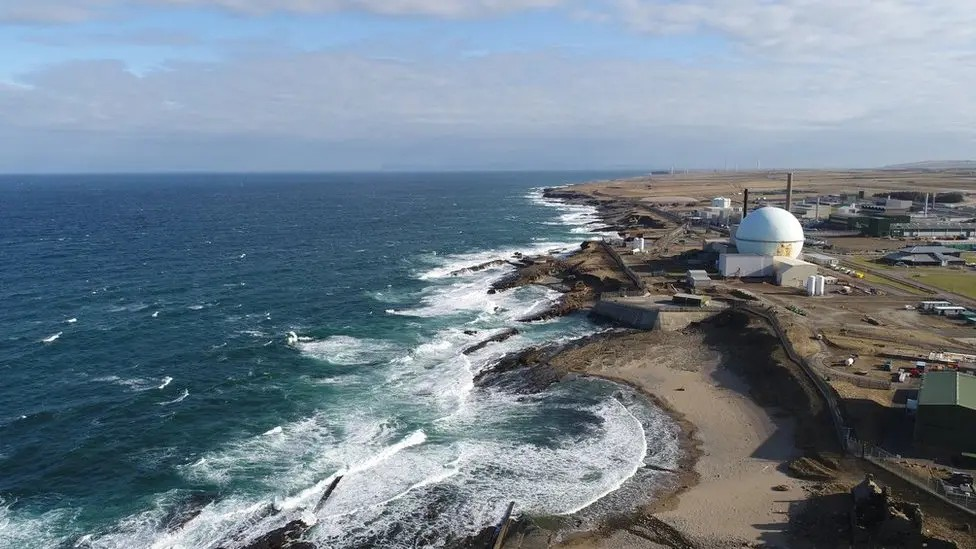
Dounreay's former experimental power complex is being demolished and cleaned up
The particle was found on the western part of Dounreay's foreshore on 7 April. Eight other finds reported, external since then have been categorised as "minor" or "relevant".
A significant-category particle was last discovered in March 2022.
Thousands of particles of different categories have been removed from beaches, foreshore and seabed at Dounreay.
The site's operator said monitoring on the site on the north Caithness coast continued to be done on a fortnightly basis.
On occasions it said the scheduled work could be interrupted by bad weather or the presence of protected species of ground-nesting birds.
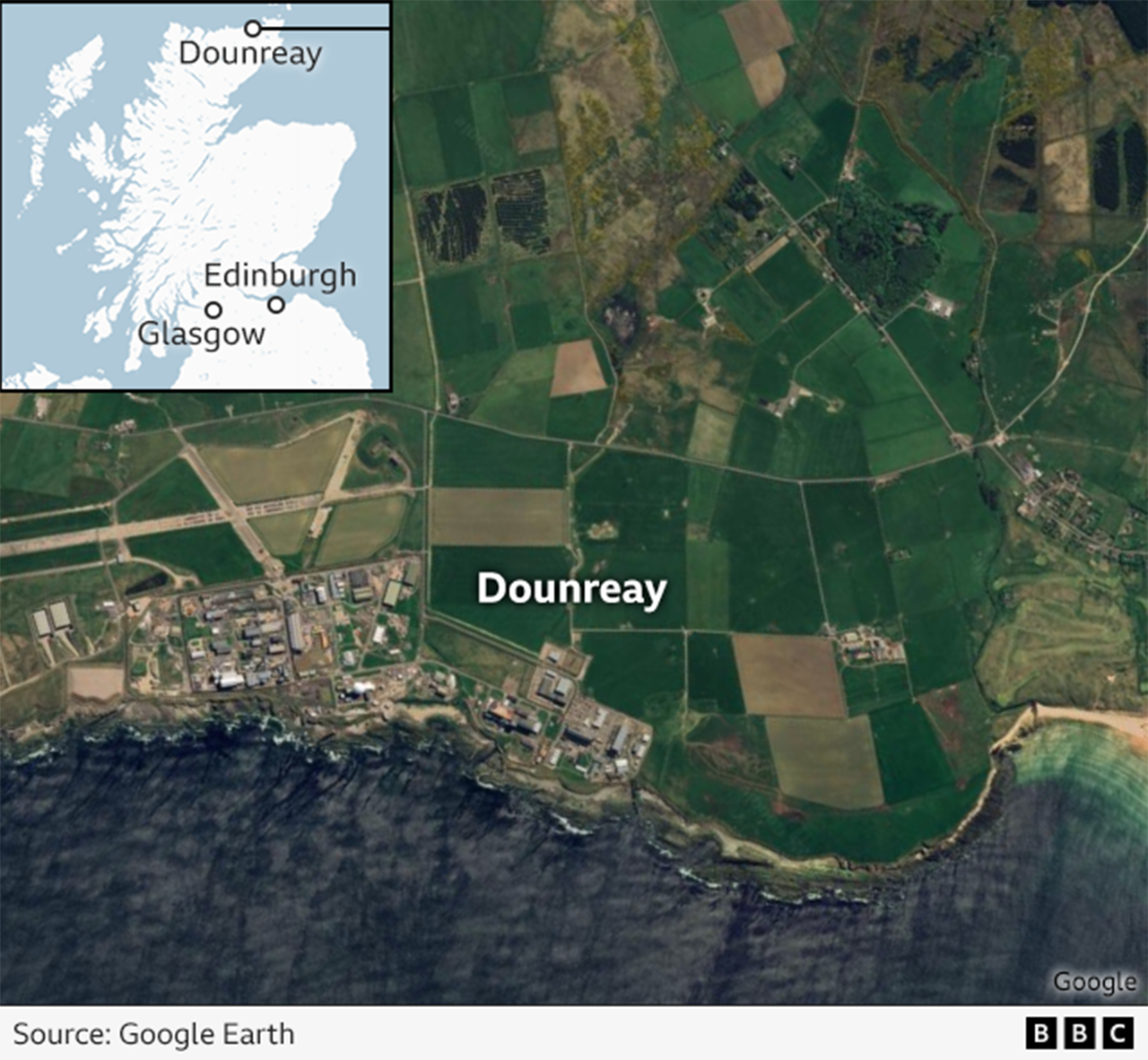
The Dounreay site is one of the biggest employers in the Highlands.
It employs 1,354 people - 96% of them living in Caithness and north Sutherland - according to the latest Dounreay Socio Economic Report.
The NDA's draft strategy said all buildings across the Dounreay site could be demolished, or put to another use, by 2078.
What risk is there to the public?
According to official reports, risk to people on local beaches is very low.
Guidance issued by the UK government's Nuclear Restoration Services says the most at-risk area is not accessible to the public, external.
The particles found along the coast vary in size and radioactivity with smaller and less active particles generally found on beaches used by the public.
Larger particles have only been found only on the foreshore at Dounreay, which is not used by the public.
The particles found on beaches are believed to come from the disintegration of larger fragments in the seabed near Dounreay. The area is continuously monitored for traces of radioactive materials.
Harvesting of seafood is prohibited within a 2km (1.2 mile) radius of a point near Dounreay. This is where the largest and most hazardous fragments have been detected.
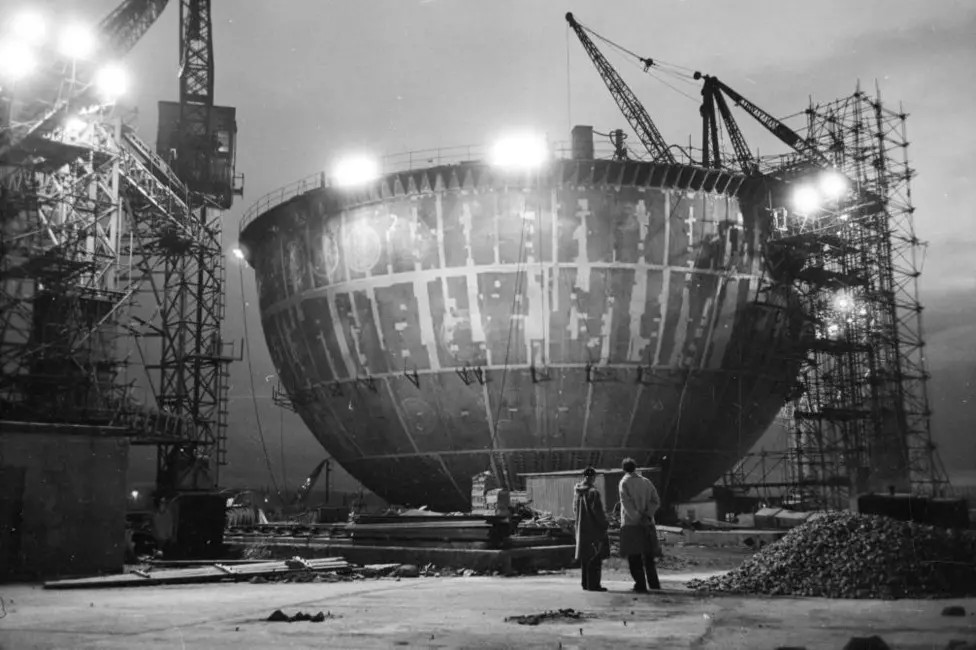
The "golf ball" reactor was built in the 1950s
Dounreay's radioactive history
1954 – A remote site on the north coast of Scotland is chosen as the site of a new type of nuclear reactor. Modern homes were built in Caithness to attract workers to the sparsely populated area.
1957 - A chain reaction which provided sustained and controlled nuclear energy is achieved for the first time.
1959 - A new disposal site for radioactive waste called the Shaft opens. It drops 65.4m (214.5ft) below ground.
1962 - The fast reactor inside the dome is the first in the world to provide electricity to a national grid.
1977 - The original "golf ball" reactor is shut down and waste disposal in the Shaft ends after an explosion.
1994 - Dounreay nuclear power generating facility closes.
1998 - Decommissioning programme is announced.
2008 - Operation to scour the seabed for hazardous material begins and the Shaft shaft is encircled in a boot-shaped ring of grout to prevent contamination.
2020 - Clean-up begins of the highly contaminated Shaft - a three decades-long project.
2333 - Decontamination expected to be complete, making the 148-acre site available for other uses.
Related topics
- Published9 September 2020
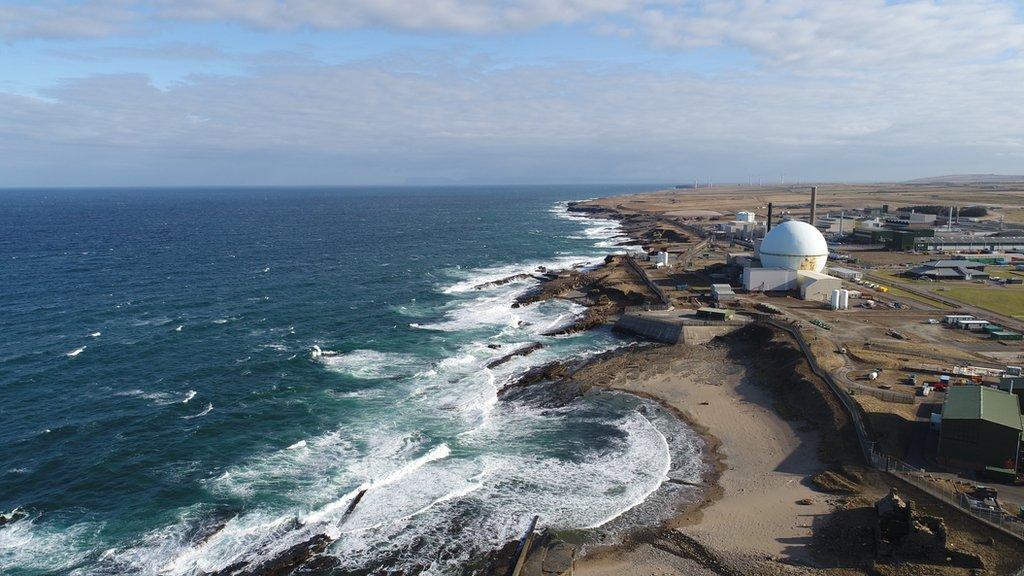
- Published13 September 2024
